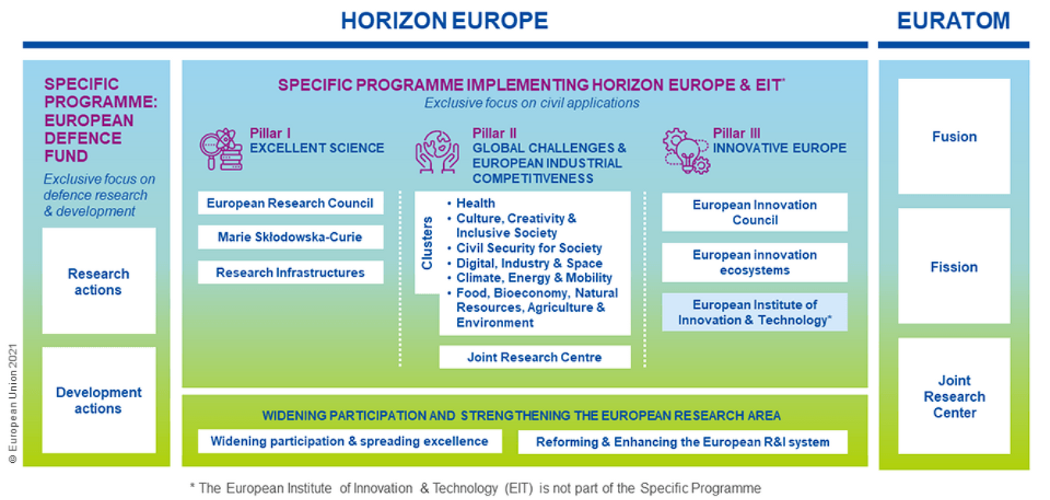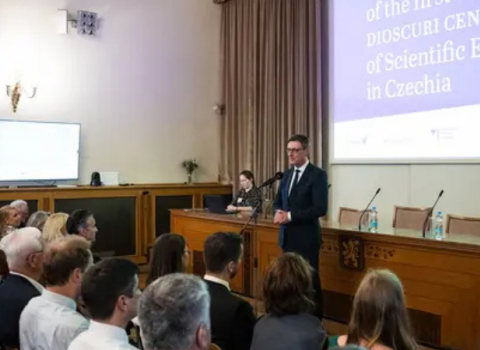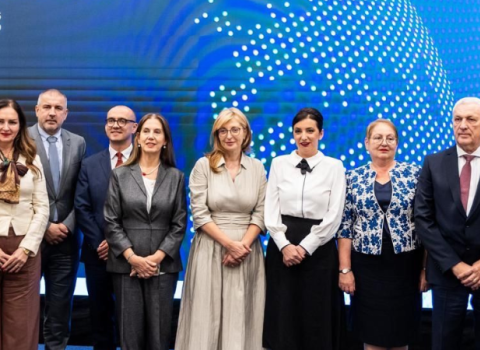We analyse the views of 15 groups of stakeholders to see how they want measures designed to close the east – west research performance gap to change in FP10

There is strong support for Widening to be retained in the EU’s next research and innovation framework programme, FP10, with an analysis of 15 position papers showing universities, research organisations and industry groups are in favour of keeping the measures in place.
However, there are diverging opinions on the structure, the instruments, the budget and the purpose of these measures.
Here, we look at the main trends to get an insight into how Europe’s research community imagines the future of Widening.
The Widening participation and spreading excellence scheme, to give it its full name, was first introduced in Horizon 2020 with the goal of helping EU member states with weaker research and innovation systems to catch up to the top performers.
Under Horizon 2020 there was a budget of just under €1 billion that funded three principal instruments: teaming, twinning and ERA Chairs. The aim was to help researchers in Widening countries connect with top performing counterparts elsewhere in Europe, and participate more in the overall Horizon 2020 programme.
Widening was expanded in Horizon Europe, with research ministers agreeing to ring fence 3.3% of the €95.5 billion Horizon Europe budget, or just under €3 billion. Several new instruments were added.
Widening in FP10
As attention turned to the design of the 2028 - 2034 research programme, FP10, Denmark was the first to rock the boat when it put out an FP10 position paper in January calling for Widening to be moved from the framework programme and funded from other sources, for example through European Structural and Investment Funds that are designed to support the EU’s lagging regions.
No other member states or organisations have explicitly backed that stance, but countries are one by one publishing FP10 position papers so there could be more support for this idea in the future.
EARTO, an association of Research and Technology Organisations, listed Widening as “non-performing” and said it needs to be improved or stopped, without specifying a preference.
The only other country to have waded in at this point is Latvia, which, seemingly in direct response to Denmark, called for the Widening budget to be doubled in FP10.
The specific question of the Widening budget is absent from other FP10 position papers. A large number of research organisations and university alliances are calling for FP10’s budget to be raised to €200 billion, over twice that of Horizon Europe. In that scenario, the Widening budget would be likely to increase, since it is worked out as a percentage of the overall budget.
Several organisations also called for national governments of Widening countries to increase spending on R&D to 3% of the overall GDP. All Widening countries are far from this target, with Romania, Malta, Latvia, Cyprus, Bulgaria, and Slovakia all spending under 1%.
Widening structure
There are several suggestions for how Widening should be structured in FP10.
Currently, it sits outside the wider programme’s three pillars, alongside measures to strengthen the European Research Area (ERA).

Denmark has called for Widening to end, while Latvia suggested putting it into pillar one.
LERU, an association of research universities, suggests creating a new “support” section of the programme that would include ERA and Widening, as well as research infrastructures, which currently sits in pillar one. “This part of FP10 would involve different funding streams, all focused on improving and strengthening the conditions for open, accessible, strong and inclusive research and innovation and the implementation of the ERA, ensuring a holistic approach to research and innovation,” LERU says.
Others have focused more on the need to better connect Widening with the rest of the research programme. The Guild, an alliance of research universities, wants Widening to remain a horizontal pillar, but its concept of supporting lagging countries to be better integrated into other parts of the programme. It describes this as “mainstreaming” Widening.
Science organisations belonging to the Initiative for Science in Europe go further, suggesting fully integrating Widening across the three pillars. A main gripe is that having a separate section for Widening countries could confine them to only participating in a small part of the overall programme.
On another note, the Guild and the Stockholm Trio, an alliance of three Swedish universities, have suggested separating Widening calls from ERA calls. This would make it [clearer] and easier for researchers when applying to specific widening action or actions related to the ERA,” the Stockholm Trio says.
A more radical restructuring of Widening is brewing behind the scenes. Some member states are eager for the measures to apply to low performing regions across Europe, not just to specific countries. While the majority of member states, particularly those currently benefiting from Widening, are understood to be against this idea, it could be brought up for debate as FP10 planning progresses.
Instruments
Widening currently consists of eight different instruments. There are the more established instruments, teaming, twinning and ERA chairs that were brought in under Horizon 2020, and newer ones such as the hop-on facility and excellence hubs that have only recently been launched.
One common theme is to have more calls under these instruments directly supporting research and innovation. That would be a change from the current situation where a large number of Widening calls are designed to support networking or collaboration activities.
The European University Association, for example, suggests a new instrument to “enable institutions from widening countries to lead the development of research projects in small research teams comprising researchers from all EU countries.”
There have also been questions about the Centres of Excellence established through teaming projects. LERU is calling for an assessment of whether or not they actually support the research ecosystems in Widening countries. “Teaming centres need to become independent from the university that supported their establishment, creating a possible competitor for research funding instead of strengthening the existing institutions,” LERU says.
Alliance4Life, a partnership of life science institutions and universities from Widening countries, raised questions about the financial sustainability of the centres, which are funded through a combination of European and national funds. In many cases the “ad hoc schemes” set up to finance the centres only last for the duration of the teaming project – up to seven years.
“Establishing a new excellent research centre without strategic coordination between European and national (and ideally also regional) levels leads to limited impact in the long term,” Alliance4Life says.
Several organisations have called for a thorough assessment of existing Widening measures to find which ones are working, need to be improved, or should be stopped. Science|Business’ own analysis showed mixed results.
Synergies
There is near unanimity among the various organisations and groups about the need to better coordinate different EU funding streams to support research and innovation. This is especially so in the case of combining European Structural and Investment Funds and framework programme funds.
Cesaer, an alliance of science and technology universities, says synergies should be at the heart of FP10. “Crucially, this must be pursued in a way that research organisations are not left with the burden of combining co-financing from instruments with incompatible legal and administrative requirements,” it says.
The Norwegian University of Science and Technology also suggested integrating European Economic Area and Norway Research Grants into Widening in FP10, maintaining separate participation rules but using the European Commission’s “successful call and grant management structure”.
Change of perception
A final common suggestion is to change perceptions of Widening, which is often associated with a lack of excellence.
Alliance4Life, for example, says that it is about time Widening actions were designed to frame its grantees as leaders, rather than inexperienced partners learning from the excellent western European researchers.
“Current collaborative schemes in Widening (except excellence hubs) use the concept of ‘leaders’ based in non-Widening countries transferring their knowledge and skills to the ‘followers’ from Widening countries,” the alliance says. “The schemes thereby promote the self-identification of researchers in Widening countries as ‘followers’, even though they formally are coordinators,” says Alliance4Life.
Here are links to the papers analysed for this article:





 A unique international forum for public research organisations and companies to connect their external engagement with strategic interests around their R&D system.
A unique international forum for public research organisations and companies to connect their external engagement with strategic interests around their R&D system.